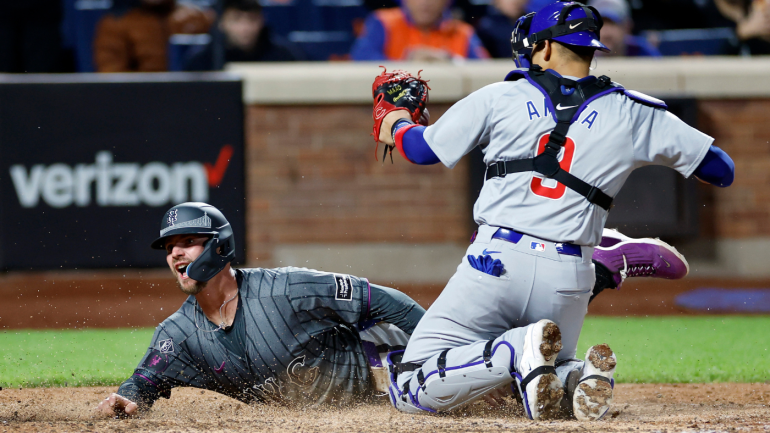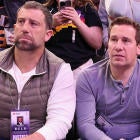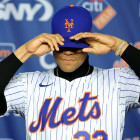
The New York Mets lost to the Chicago Cubs in controversial fashion on Wednesday night, with first baseman Pete Alonso being called out at the plate to end the 1-0 game (box score). Alonso had been attempting to score the game-tying run on a Jeff McNeil fly out to left field that Ian Happ caught and delivered to relay man Nick Madrigal.
The call was reviewed but upheld, with the umpires determining that Alonso had not touched the plate before he was tagged out, as well as that Cubs backstop Miguel Amaya had not violated the league's Home Plate Collision Rule.
Here's a look at the play in question. Pay close attention to Amaya's setup as he prepares to corral the throw:
After review, there is no blocking on the final play of the game, the call stands, and Pete Alonso is out. pic.twitter.com/qt2NM14e4y
— SNY (@SNYtv) May 2, 2024
For reference, here's Rule 6.01(i)(2) in its entirety:
Unless the catcher is in possession of the ball, the catcher cannot block the pathway of the runner as he is attempting to score. If, in the judgment of the umpire, the catcher without possession of the ball blocks the pathway of the runner, the umpire shall call or signal the runner safe. Not withstanding the above, it shall not be considered a violation of this Rule 6.01(i)(2) if the catcher blocks the pathway of the runner in a legitimate attempt to field the throw (e.g., in reaction to the direction, trajectory or the hop of the incoming throw, or in reaction to a throw that originates from a pitcher or drawn-in infielder). In Rule 6.01(i)(2) to 6.01(j) addition, a catcher without possession of the ball shall not be adjudged to violate this Rule 6.01(i)(2) if the runner could have avoided the collision with the catcher (or other player covering home plate) by sliding.
Mets manager Carlos Mendoza, in his first year at the helm, disagreed with that assessment. "I think they got the wrong call," he said after the game. Mendoza explained that his understanding of the rule, as informed by a springtime memo sent to all managers, bans catchers from straddling the plate without possession of the ball.
SNY's Andy Martino tweeted an image from the memo alongside pictures of Amaya's left foot clearly being on the plate before he obtained the ball. Said memo notes that "the following setups are illegal without possession of the ball and place the catcher in jeopardy of a violation" with accompanying pictures of catchers who have their feet "on the foul line or home plate," "straddling the foul line," and "in foul territory or straddling home plate."
Nevertheless, the MLB Replay Center issued a statement on the call that read: "the Replay Official determined that no violation of the Home Plate Collision Rule occurred. The catcher's initial setup was legal and he moved into the lane in reaction to the trajectory of the incoming throw."
Mets reporter Steve Gelbs on Thursday reported on SNY that the league office confirmed it was the correct interpretation of the rule, but that the guidelines had changed in the offseason.
"They did alter what the rule is," Gelbs reported before the day game. "They said they still do not want a catcher to have their foot on the plate. However, if they give a path to the runner to score, then it is up to the discretion of the umpire whether or not to call them out or safe. And since there was a path last night, the umpires in the replay room said that it was a legal play."
Alonso, for his part, told reporters he thought he had snuck his hand in there before the tag was applied. "But the call said I was out, so I was out."

















